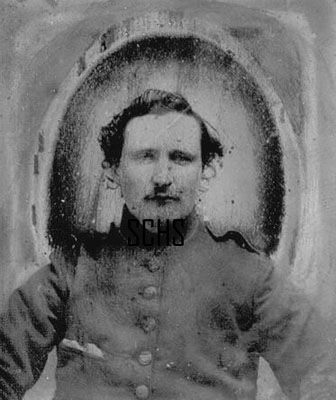
Sergeant Berry Benson
Co. A, McGowan’s Sharpshooters (Co. H, First South Carolina). Benson was captured on a scout at Spotsylvania in May, 1864 and sent to Elmira prison in New York. He escaped and returned to his regiment, serving until the end of the war. Courtesy South Carolina Historical Society. Copyright SCHS.
|
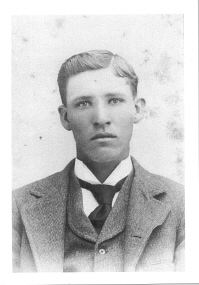
Private Ben Powell
Co. A, McGowan’s Sharpshooters (Co. I, Twelfth South Carolina). Powell is a strong candidate for the shooting Union major general John Sedgwick at Spotsylvania on May 9, 1864. Courtesy John Everett
|
|
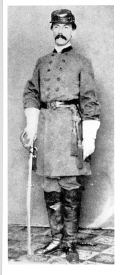
Major Eugene Blackford
F&S, Fifth Alabama. Commanded Rodes’s—Battle’s Sharpshooters and Rodes’s Division Sharpshooters. Blackford's sharpshooter battalion was the first to be so organized in the Army of Northern Virginia in January, 1863.
|
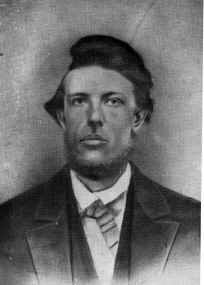
Sergeant Marion Hill Fitzpatrick
Company K, Forty-fifth Georgia. Served with the sharpshooters of Thomas’s brigade, Wilcox’s division. Later appointed sergeant major. Wounded April 2; died
April 6, 1865. Courtesy Marion Hodges
|
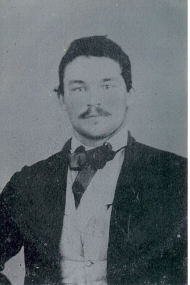
Private Lewis Branscomb
Co. D, Third Alabama. Served with Blackford’s sharpshooters, killed at Harper’s Ferry
July 4, 1864. Courtesy Frank Chappell
|
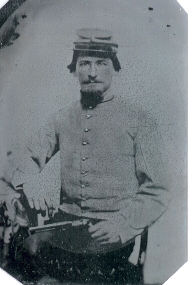
Private James Branscomb
Co. D, Third Alabama. Served with Blackford’s sharpshooters. Killed at Harris Farm May 19, 1864. Courtesy Frank Chappell
|
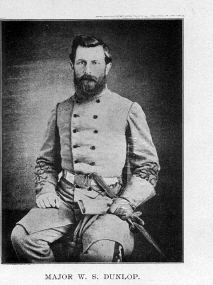
Captain William S. Dunlop
Co. B, Twelfth South Carolina. Commanded McGowan’s sharpshooters 1864-65. After the war he wrote Lee's Sharpshooters, detailing his battalion's exploits.
|
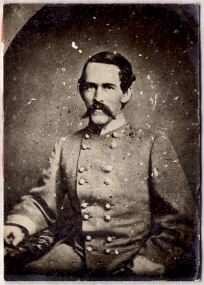
Major General Robert Rodes
A native of Virginia and former tactics instructor at VMI, Robert Rodes began the war as commander of the Fifth Alabama, then assumed brigade command. He organized the first sharpshooter battalion in his brigade in January, 1863, and later organized a corps of division sharpshooters. He was killed at Winchester, VA on September 19, 1864. Courtesy Howard McManus
|
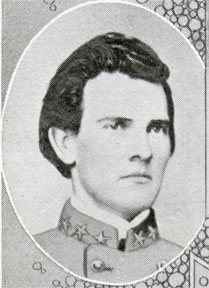
Major Edwin A. Osborne
F&S, Fourth North Carolina. Osborne commanded the sharpshooters of Ramseur's brigade at the Wilderness. Later promoted to Colonel.
|

Colonel Hamilton A. Brown
Brown commanded the First North Carolina until most of his regiment was killed or captured at Spotsylvania on May 12, 1864. In August 1864 he took over command of Rodes's Division Sharpshooters, a post he held until his capture at Ft. Stedman on March 25, 1865.
|
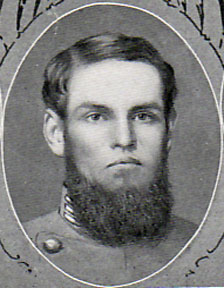
Captain Thomas D. Boone
Co. F, First North Carolina. Like his commander, Col. H. A. Brown, Boone survived the destruction of his regiment at Spotsylvania and joined Rodes's Division Sharpshooters, as did many of the officers and senior NCO's of the First North Carolina.
|
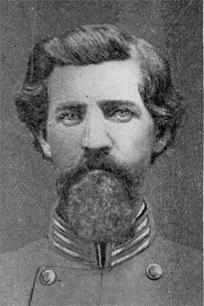
Captain William E. Stitt
Company B, Forty-third North Carolina. "Ed" Stitt commanded the sharpshooters of Grimes's brigade, Rodes division.
|

Private Louis Leon
Company B, Fifty-third North Carolina. Leon volunteered for the sharpshooters of Daniel's (later Grimes's) brigade in the spring of 1863, when the brigade joined the Army of Northern Virginia after Chancellorsville. He fought at Gettysburg but was captured the next spring at the Wilderness and spent the rest of the war in prison. In 1913 he wrote his memoir, Diary of a Tarheel Confederate Soldier.
|
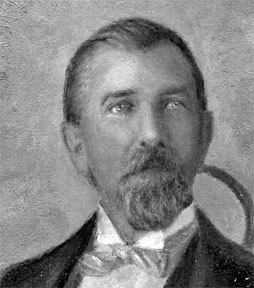
Private Oscar Whitaker
Company I, Twelfth Alabama. Whitaker joined the sharpshooters of Rodes's–Battle's brigade, where he was acting sergeant for 2½ years. Captured at Fort Stedman in March, 1865, he was released in June and returned home to Mobile. He died in 1920. Courtesy Beth Davis
|
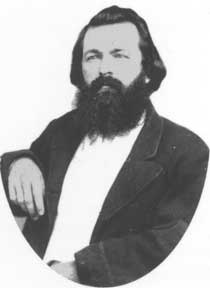
Lieutenant William Montgomery
Company F, Third Battalion Georgia Sharpshooters. Montgomery began his service in Cobb's Legion, part of Wofford's Georgia brigade. In the spring of 1863 he transfered along with other volunteers from across the brigade to the new Third Battalion Georgia Sharpshooters which, unlike most sharpshooter battalions was a permanent unit. Athough wounded several times he survived to return to his home in Marietta. He died in 1906. Courtesy Mercer University Press
|
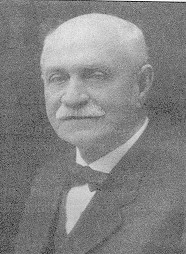
Major William Simmons
F&S, Third Battalion Georgia Sharpshooters. William Simmons was elected a lieutenant in the Sixteenth Georgia and later transferred to Third Battalion Georgia Sharpshooters where he commanded Company C. Captured by Custer's cavalry at Guard Hill, VA, in August, 1864, he spent the rest of the war in Fort Delaware prison. He was elected solicitor general of Georgia after the war and spent many years as a university trustee. He died in 1931 at the age of 91.
|
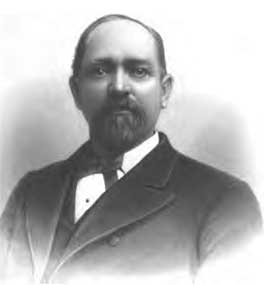
Captain Benjamin H. Bunn
Co. A, Forty-seventh North Carolina. In 1863 Lieutenant Bunn was assigned to command the sharpshooter company of his regiment and later, as a captain, the sharpshooters of McRae's North Carolina brigade. He was wounded on the picket line on March 25, 1865, which kept him out of action for the rest of the war. Afterwards he became a lawyer and politician, serving three terms in the US House of Representatives. In 1880 he supported the presidential candidacy of former Union general Winfield Hancock. Bunn died in 1907.
|
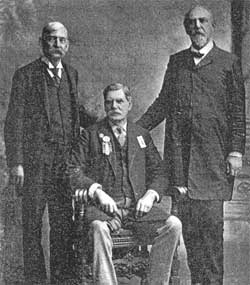
Captain Fergus S. Harris
Company H, Seventh Tennessee. Fergus Harris (right) enlisted as a private in 1861 and was eventually promoted to captain. He commanded the sharpshooters of Archer's brigade, and was wounded eight times, the last on April 2, 1865, while trying to stem the Union breakthrough at Petersburg. After the war he became a businessman, and died in 1905. Here he poses at a reunion with his former brigade commander, Brig. Gen. William McComb (center) and his adjutant, Capt. John Allen (left).
|
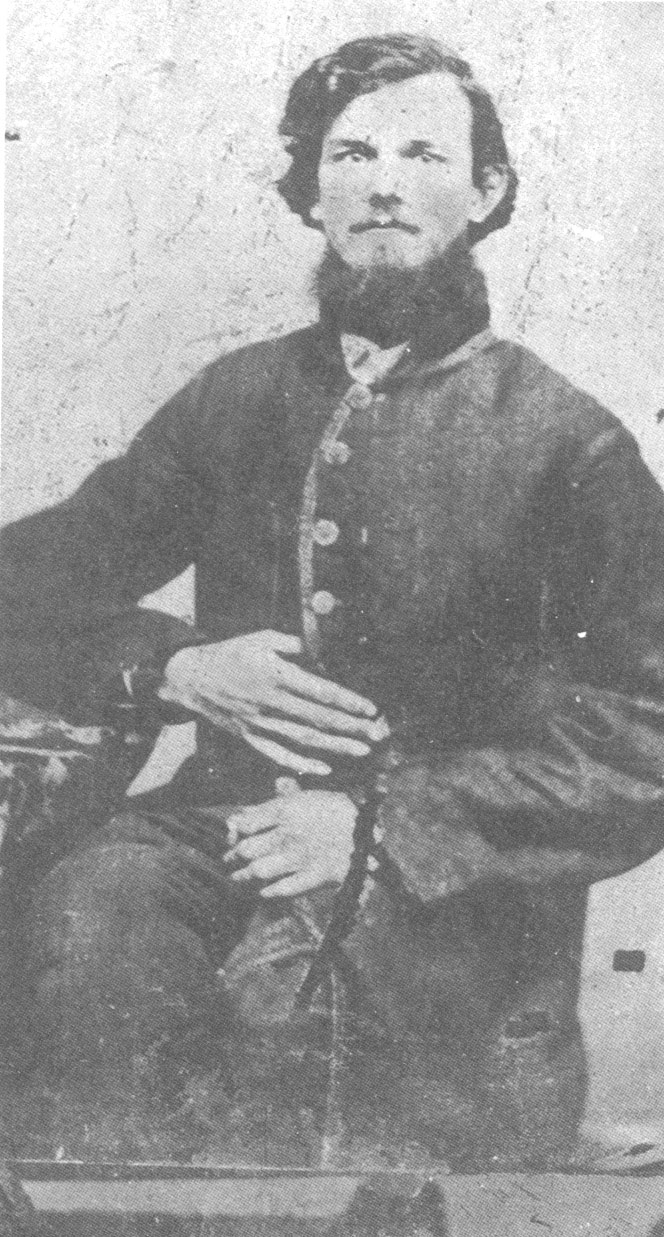
Corporal Milton Barrett
Co. E, Third Battalion Georgia Sharpshooters. Milton Barrett enlisted in the Eighteenth Georgia in 1861 and transferred to the sharpshooters in May, 1863. He was captured at Guard Hill, VA, in August, 1864 and sent to Elmira prison, where he died of smallpox on February 12, 1865. He is buried there in Grave #2108.
|
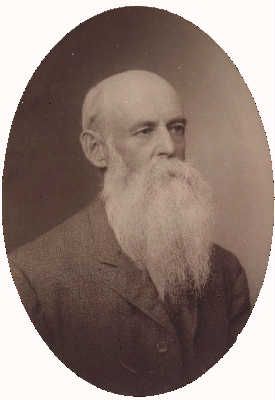
Private Charles T. Ingram
Co. F, Third Missouri. Twenty-four year old Texas farm boy Charles Ingram enlisted on December 31, 1861. Captured at Vicksburg in 1863, he was paroled and became a Whitworth sharpshooter in Gen. Patrick Cleburne's division of the Army of Tennessee. Near the end of the war his brigade (Cockrell's) was sent to Fort Blakely, AL. After the fort's fall Ingram made his way home with his Whitworth, which today is in the 45th Division Museum in Oklahoma City.
|
| UNION |
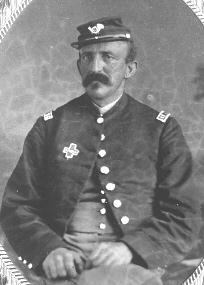
Captain Alexander M. Beattie
Co. F, 3rd Vermont. Beattie enlisted in 1861 and was promoted to captain a year later. Described as "a man of cast-iron mould," he commanded the division sharpshooters of Getty's 2nd division, VI US Corps at Petersburg and Ft. Stevens. Beattie won the Medal of Honor for bravery at Cold Harbor for rescuing a wounded comrade. Mustered out July 27, 1864, he died in 1907. Vermont Historical Society
|
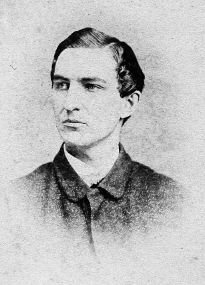
Major Aldace F. Walker
F&S, 11th Vermont (1st Vermont Heavy Artillery). Walker commanded a battalion in the famous Vermont brigade. He thought the skirmish line was "the favorite position of the experienced soldier." He died in 1901. Vermont Historical Society
|
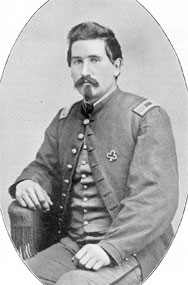
Captain Jerry Z. Brown
Co. K, 148th Pennsylvania. Brown led a daring raid on Confederate positions at Petersburg on the night of October 27, 1864. His actions won him a Medal of Honor and brevet to major.
|
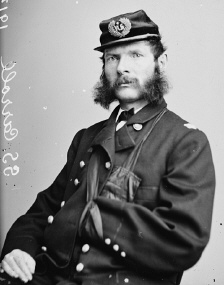
Colonel Samuel Carrol
Regular Army officer Samuel Carrol organized a corps of light infantry sharpshooters for his brigade, but his innovations were never adopted by a conservative army establishment. "Old Brick Top" was badly wounded at Spotsylvania (he lost an arm, as this photo shows), which kept him out of the field for the rest of the war but won promotion to brigader general. Library of Congress
|
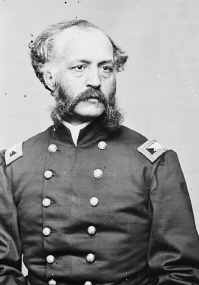
Colonel Hiram Berdan
Flamboyant self-promoting inventor and businessman Hiram Berdan organized the 1st United States Sharpshooters in 1861 and commanded them until 1863 when he left the army. Although his sharpshooters performed well, Berdan's field leadership left much to be desired. Library of Congress
|
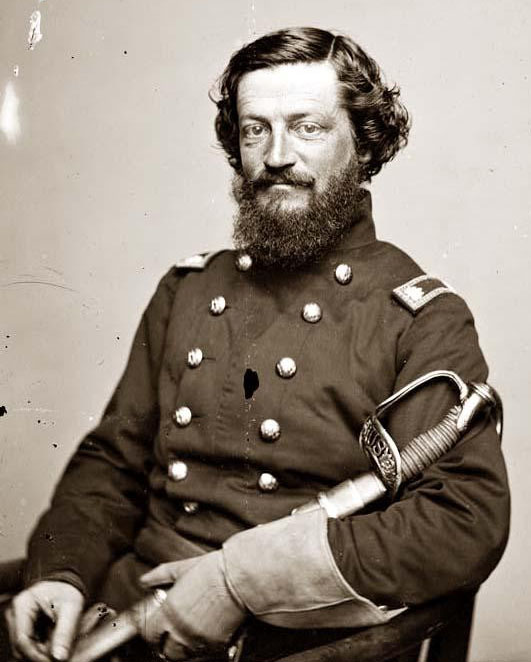
Colonel Thomas Kane
Organizer and commander of "Kane's Bucktails," later the 13th Pennsylvania Reserves. Twice severely wounded, he resigned because of their effects and ill health in 1863.
|
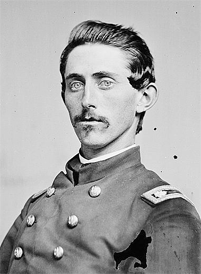
Lieutenant Colonel Homer Stoughton
F&S, 2nd U.S.Sharpshooters. Stoughton commanded the 2nd U.S.S.S. at Gettysburg and in the 1864 Overland campaign. Wounded at Spotsylvania on May 9, he returned to the regiment at Petersburg on June 21st only to be captured. Library of Congress
|

Colonel Henry Post
F&S, 2nd U.S. Sharpshooters. Post was the first commander of the 2nd U.S.S.S. Library of Congress
|
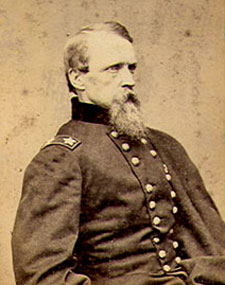
Major General David Birney
A lawyer and ardent abolitionist before the war, Birney was one of the Union's many political generals. Unlike most of them, however, he developed into a competent military man. Often in brigade and division command of the 1st and 2nd U.S.S.S., he developed an appreciation of light infantry. Shortly after being promoted to corps command he was stricken with malaria and died soon afterwards on October 18, 1864.
|
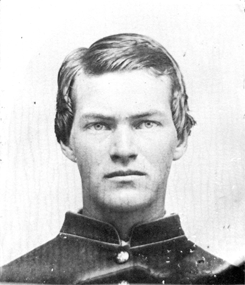
Private William Greene
Company G, 2nd U.S. Sharpshooters. Seventeen-year-old New Hampshire farm boy Willie Greene joined the sharpshooters in a fit of youthful enthusiasm in 1861 and spent the rest of war trying unsuccessfully to get a discharge. After nearly four years service he was furloughed home for illness on April 2, 1865, then mustered out. Courtesy William H. Hastings
|
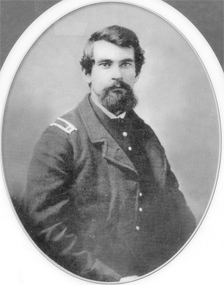
Lieutenant James Matthews
Company D, 2nd U.S.S.S. Matthews enlisted as a private in 1861, served as a sergeant for most of the war, and was promoted to lieutenant in December, 1864. He served as the regiment's acting adjutant until it was disbanded in February, 1865, whereupon he was mustered out. He died in 1874. Courtesy Richardson's Civil War Round Table
|
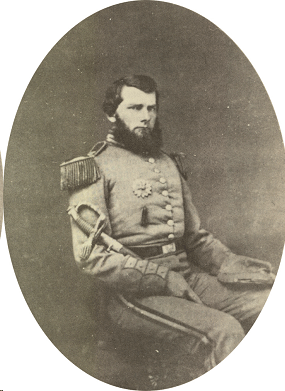
Lieutenant Colonel William Ripley
F&S, 1st U.S.S.S. Ripley, shown here in a prewar militia uniform, was appointed lieutenant colonel of the sharpshooters in 1861 and served in the Peninsular campaign. He was severely wounded at Malvern Hill (and later received the Medal of Honor) in July and never returned to the field. After the war he wrote A History of Company F. He died in 1905.
|
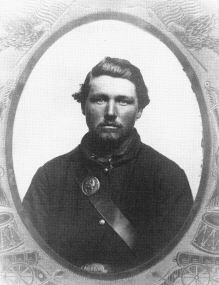
Private Daniel Sawtelle
Company B, 8th Maine. Daniel Sawtelle joined up in February, 1862, against his family's wishes. In July, 1864, he volunteered for the sharpshooter company of 2nd division, 18th Corps, where, armed with a Spencer rifle, he served out the war. He suffered the effects of a bout of typhoid fever for the rest of his life and died in 1931. Courtesy Carla Burdon
|
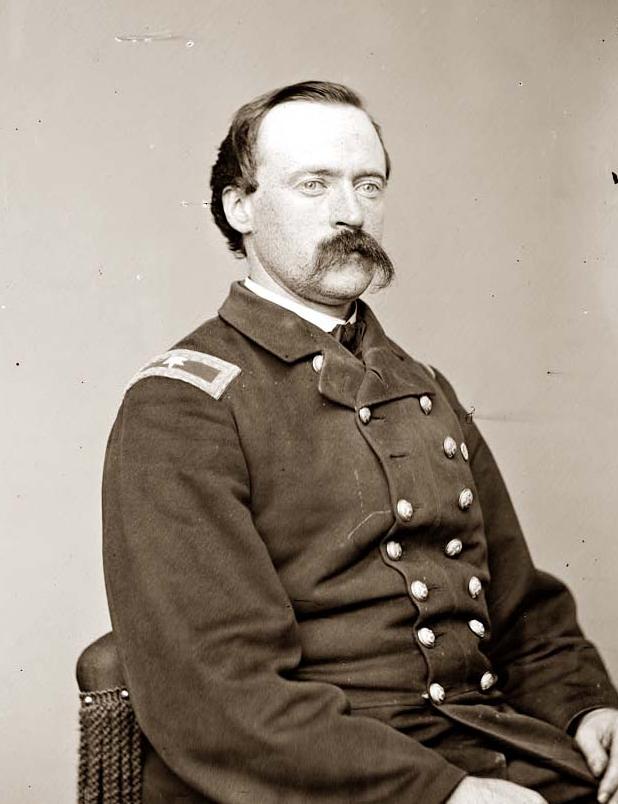
Colonel Oliver Edwards
Oliver Edwards began the war as a staff officer, but joined the 37th Massachusetts in August 1864 as its major. He was subsequently promoted to colonel and as commander led the regiment through the fall of 1864 when he was promoted to brigadier. Armed by its home state with Spencer rifles in the summer of 1864, the 37th often specialized in light infantry fighting. Edwards considered “a skirmish line armed with them [Spencers] fully equal to a line of battle armed with the Springfield.”
|
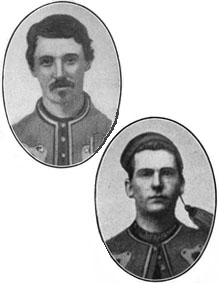
Sergeant William Logan (top left)
Corporal William Rankin (bottom right)
Company I, 155th Pennsylvania. Both men served in the sharpshooter company of 1st division, 5th Corps, organized in July 1864 at Petersburg. The three division companies were later consolidated into a sharpshoooter battalion under corps control. Both men survived the war and were mustered out in 1865.
|
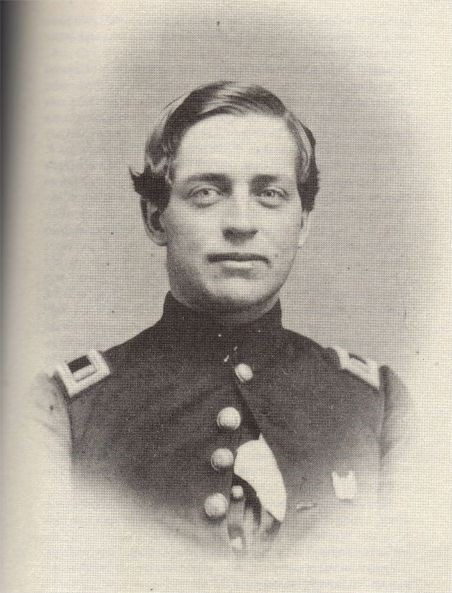
Captain Rufus Jacklin
1st Company Sharpshooters ("Brady's Sharpshooters"), 16th Michigan. Twenty-year-old Rufus Jacklin enlisted in Brady's Sharpshooters in 1862, which was subsequently attached to the 16th Michigan for the remainder of the war. Lieutenant Jacklin served as regimental adjutant but often commanded the skirmish line. He was promoted to captain in June, 1864, and subsequently served as "chief of sharpshooters" for 5th Corps, where he commanded a composite sharpshooter battalion. Breveted to major in March, 1865, he was mustered out in July.
|
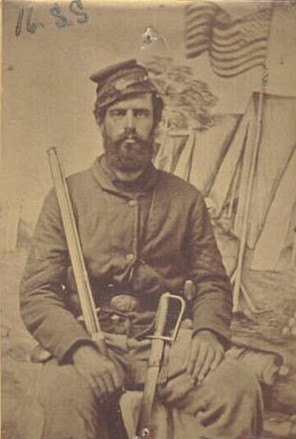
Sergeant Charles Rice
Enlisted in First Company Sharpshooters, attached to Sixteenth Michigan Infantry, as Sergeant, Sept. 16, 1861, at Detroit, for 3 years, age 22. Joined regiment at Hall's Hill, Va., Feb. 14, 1862, as First Sergeant. Commissioned Second Lieutenant Nov. 1, 1862. Commissioned First Lieutenant Jan. 15, 1863. Discharged on Surgeon's certificate of disability Aug. 14, 1863. Courtesy Michigan State Archives
|
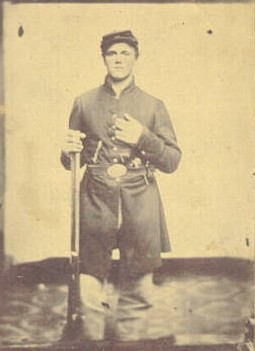
Private Harmon Wise
Enlisted in Company C 1st U.S. Sharpshooters Aug. 21, 1861 at Detroit for 3 years age 18. Killed in action at Chancellorsville Va. May 3, 1863. Courtesy Michigan State Archives
|




































